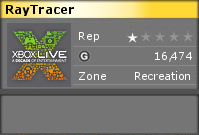For those who don’t keep a close eye on my Xbox playing habits, I picked up NHL 07 last night. There are two hockey franchises for the Xbox 360: EA Sports and 2K Sports. I’ve been a 2K fan for several years, but I didn’t think much of their last effort on Xbox so I never bothered to pick the 360 version. Of course, EA Sports skipped the 360 last year so I’ve been without next-gen hockey since I bought my next-gen console.
Now there’s a new version of both major hockey franchises, just in time for the opening of training camps. Each has had an entire year to innovate, and it’s interesting to see where each title has spent that time. 2K Sports has created “Cinemotion”, which is an entirely new presentation system which is more like an “interactive hockey movie” than a TV broadcast.

EA Sports spent their time on an entirely new control scheme called “Skill Stick”. Basically, while the left thumbstick still controls player movement, the right thumbstick controls the player’s stick. It’s taking time to get used to – hey I’ve only had the game a few hours – but so far I really like it. I was playing the XBLM Demo and scored on a sweet spinorama move with the skill stick. That pretty much hooked me on the spot. Most of the reviewers have singled out the skill stick as the reason for the generally favorable reviews.
Plus, EA picked Washington Capitals superstar Alex Ovechkin for their cover athlete. Barring awful reviews, I pretty much decided to pickup NHL 07 as soon as I heard that.
